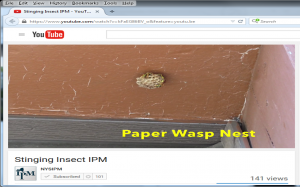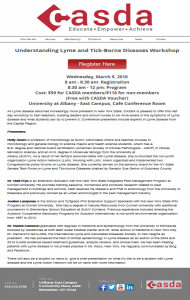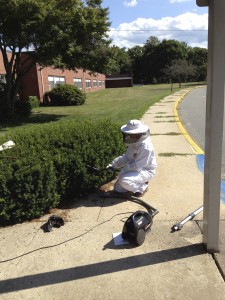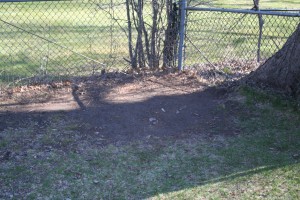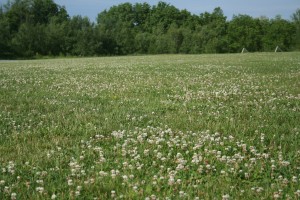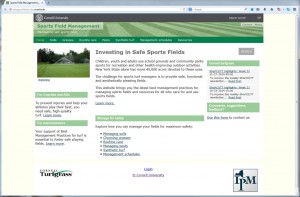Thank you to Janet Hurley, Texas A&M AgriLife Extension Service, for her dedicated effort to progress school IPM and for allowing us to use her post.
In 2014, a number of collaborating institutions led by Dawn Gouge, University of Arizona and Janet Hurley , Texas A&M AgriLife Extension received two separate grants from the Environmental Protection Agency (EPA) to provide online resources on integrated pest management (IPM) for school personnel. The Stop School Pests team used their grant to focus on education and training for personnel, while Hurley and collaborating scientists created a one-stop online “big box store” of IPM resources, including documents, training, pest ID pamphlets, state legislation and more.
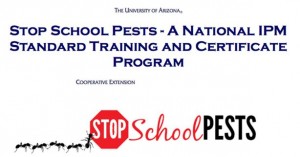 The training website, Stop School Pests, resulted from a collaboration of 42 people from federal and state agencies, universities, school districts, tribes, advocacy organizations and industry. Together they proposed to build a resource that would increase IPM adoption in K-12 schools and reduce the risks from pests and repeated pesticide use.
The training website, Stop School Pests, resulted from a collaboration of 42 people from federal and state agencies, universities, school districts, tribes, advocacy organizations and industry. Together they proposed to build a resource that would increase IPM adoption in K-12 schools and reduce the risks from pests and repeated pesticide use.
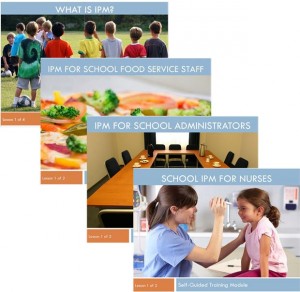 Stop School Pests provides modifiable PowerPoint presentations for in-class teaching and self-guided online courses. Lessons are specific to different roles within a school, so that facility staff will have access to materials specific to them.
Stop School Pests provides modifiable PowerPoint presentations for in-class teaching and self-guided online courses. Lessons are specific to different roles within a school, so that facility staff will have access to materials specific to them.
While some groups, such as facility managers and maintenance personnel, were eager to delve into the materials, others such as nurses and teachers initially did not think the subject matter pertained to them. However, several who participated in some of the in-class lessons said that they did not realize how much they did not know about pest management and were glad that they took the lessons.
“I have been a school nurse for 25 years, and I cannot believe I learned so much helpful information in just one hour,” said Mary Griffin, a nurse in Arizona, after attending a training session piloting the Stop School Pests School Nurse Module.
A softball coach said that she did not realize that spraying pesticides without a license was illegal in her state until she went through the training.
For personnel who need specific information or don’t know where to turn once a pest problem starts, the iSchoolPestManager website provides over 1,000 resources, including the educational materials from the Stop School Pests project.
The iSchoolPestManager site was built as a searchable online mine of school IPM resources from every state. Staff from Texas A&M AgriLife spent several months collecting materials; then volunteers from throughout the country, even one from Israel, painstakingly combed through them to eradicate duplicates, outdated materials or references to materials that no longer existed. The initial 1,315 resources were pared down to 1,045 entries. Staff at the Pesticide Information Center in Oregon helped design and build the website. The website currently has 1,065 documents to assist everyone with adopting, maintaining, and sustaining their IPM program.
Search for all sorts of documents by going to the show me everything tab.
The site is formatted for a standalone computer, with a separate link that will bring up special formatting for a smart phone or tablet. Resources are divided into four areas: geographically specific, professional trainings and other materials, insect-specific information, and groups of documents such as fact sheets, regulations, checklists and more.
Rather than duplicate information already provided at other websites, Hurley decided to link to them. For instance, self-paced instruction under “Training Modules” links to pages hosted by eXtension. Some of the PowerPoint presentations are located at Bugwood. Some of the educational links go to videos at university websites.
While the amount of information in iSchoolPestManager might seem overwhelming at first, users looking for specific information will be able to use the headings and sections to locate what they need more easily.
Additional information
- Stop School Pests Training Modules ready for immediate use! http://articles.extension.org/pages/73468/self-paced-learning-page-for-urban-ipm
- Stop School Pests site (stopschoolpests.org) http://cals.arizona.edu/apmc/StopSchoolPests.html
- iSchoolPestManager site: http://ischoolpestmanager.org


